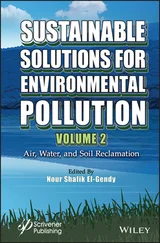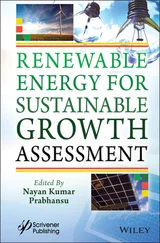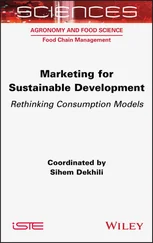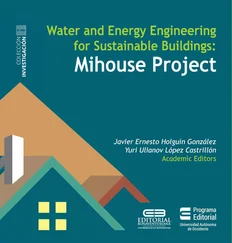The large‐scale production of valuable products in the bioreactor is a complex process, requiring an assessment of the different parameters affecting its efficiency. The skills of a biotechnologist and a chemical engineer need to be combined in order to achieve a practical approach to the production of biosurfactants. Several research efforts have been made to evaluate the potential of different microbes for the production of industrial byproduct biosurfactants as substrates.
The use of low‐cost industrial waste and renewable materials may significantly reduce the operating costs of biosurfactant production (by almost 50%). The use of industrial byproducts/waste for the production of biosurfactant is therefore a sustainable option.
The editor (Hemen Sarma) has extensively revised the readability and carried out editing on the basis of the original text of the authors, without altering the meaning of the text in this chapter. However, any competing interest arises from any statement, and the author is liable.
1 1 Ochsner, U.A. and Reiser, J. (1995). Autoinducer‐mediated regulation of rhamnolipid biosurfactant synthesis in Pseudomonas aeruginosa. Proc. Natl. Acad. Sci. USA 92 (14): 6424–6428.
2 2 Das Neves, L.C.M., De Oliveira, K.S., Kobayashi, M.J. et al. (2007). Biosurfactant production by cultivation of Bacillus atrophaeus ATCC 9372 in semidefined glucose/casein‐based media. Appl. Biochem. Biotecnol. 137: 539–554.
3 3 Batista, B.D., Taniguti, L.M., Almeida, J.R. et al. (2016). Draft genome sequence of multitrait plant growth‐promoting Bacillus sp. strain RZ2MS9. Genome Announc. 4 (6): e01402–e01416.
4 4 Nguyen, T.T. and Sabatini, D.A. (2011). Characterization and emulsification properties of rhamnolipid and sophorolipid biosurfactants and their applications. Int. J. Mol. Sci. 12: 1232–1244.
5 5 Sarma, H., Bustamante, K.L.T., and Prasad, M.N.V. (2018). Biosurfactants for oil recovery from refinery sludge: magnetic nanoparticles assisted purification. In: Industrial and Municipal Sludge (eds. M.N.V. Prasad, P.J. de Campos, F. Meththika and V.S. Venkata Mohan (eds.)). Elsevier. ISBN: 9780128159071.
6 6 Mata‐Sandoval, J.C., Karns, J., and Torrents, A. (2002). Influence of rhamnolipids and triton X‐100 on the desorption of pesticides from soils. Environ. Sci. Technol. 36: 4669–4675.
7 7 Das, P., Mukherjee, S., and Sen, R. (2009). Substrate dependent production of extracellular biosurfactant by a marine bacterium. Bioresour. Technol. 100 (2): 1015–1019.
8 8 Geetha, S.J., Banat, I.M., and Joshi, S.J. (2018). Biosurfactants: Production and potential applications in microbial enhanced oil recovery (MEOR). Biocatal. Agric. Biotechnol. 14: 23–32.
9 9 Geissler, M., Oellig, C., Moss, K. et al. (2017). High‐performance thin‐layer chromatography (HPTLC) for the simultaneous quantification of the cyclic lipopeptides surfactin, iturin A and fengycin in culture samples of Bacillus species. J. Chromatogr. B 1044: 214–224.
10 10 Guzik, M.W., Kenny, S.T., Duane, G.F. et al. (2014). Conversion of post consumer polyethylene to the biodegradable polymer polyhydroxyalkanoate. Appl. Microbiol. Biotechnol. 98: 4223–4232.
11 11 Haeri, S.A. (2016). Bio‐sorption based dispersive liquid‐liquid microextraction for the highly efficient enrichment of trace‐level bisphenol A from water samples prior to its determination by HPLC. J. Chromatogr. B Anal. Technol. Biomed. Life Sci. 1028: 186–191.
12 12 GhayyomiJazeh, M.G., Forghani, F., and Deog‐Hwan, O. (2012). Biosurfactan production by Bacillus sp. isolated from petroleum contaminated soils of Sirri Island. Am. J. Appl. Sci. 9: 1–6.
13 13 Grosso‐Becerra, M.V., Gonzalez‐Valdez, A., Granados‐Martinez, M.J. et al. (2016). Pseudomonas aeruginosa ATCC 9027 is a non‐virulent strain suitable for mono‐rhamnolipids production. Appl. Microbiol. Biotechnol. 100: 9995–10004.
14 14 He, S., Ni, Y., Lu, L. et al. (2020). Simultaneous degradation of n‐hexane and production of biosurfactants by Pseudomonas sp. strain NEE2 isolated from oil‐contaminated soils. Chemosphere 242: 125237.
15 15 Vecino, X., Rodríguez‐López, L., Gudiña, E.J. et al. (2017). Vineyard pruning waste as an alternative carbon source to produce novel biosurfactants by Lactobacillus paracasei. J. Ind. Eng. Chem. 55: 40–49.
16 16 Cavalcanti, M.H.C., Magalhaes, V.M., Farias, C.B.B. et al. (2020). Maximization of biosurfactant production by Bacillus invictae using agroindustrial residues for application in the removal of hydrophobic pollutants. Chem. Eng. Trans. 79: 55–60.
17 17 Go, A.W., Conag, A.T., Igdon, R.M.B. et al. (2019). Potentials of agricultural and agro‐industrial crop residues for the displacement of fossil fuels: A Philippine context. Energ. Strat. Rev. 23: 100–113.
18 18 Aguiar, G.P.S., Limberger, G.M., and Silveira, E.L. (2014). Alternativas tecnológicas para o aproveitamento de resíduos provenientes da industrialização de pescados. Rev. Eletrônica Interdiscip. 1 (11): 229–225.
19 19 Jørgensen, T.R., Nitsche, B.M., Lamers, G.E. et al. (2010). Transcriptomic insights into the physiology of Aspergillus niger approaching a specific growth rate of zero. Appl. Environ. Microbiol. 76 (16): 5344–5355.
20 20 Karnwal, A. (2018). Use of bio‐chemical surfactant producing endophytic bacteria isolated from rice root for heavy metal bioremediation. Pertanika J. Trop. Agric. Sci. 41 (2): 699–713.
21 21 Kaur, H.P., Prasad, B., and Kaur, S. (2015). A review on application of biosurfactants produced from unconventional inexpensive wastes in food and agriculture industry. World J. Pharm. Res. 4 (8): 827–842.
22 22 Kertesz, M.A. and Thai, M. (2018). Compost bacteria and fungi that influence growth and development of Agaricus bisporus and other commercial mushrooms. Appl. Microbiol. Biotechnol. 102 (4): 1639–1650.
23 23 Lima, F.A., Santos, O.S., Pomella, A.W.V. et al. (2020). Culture medium evaluation using low‐cost substrate for biosurfactants lipopeptides production by Bacillus amyloliquefaciens in pilot bioreactor. J. Surfactant Deterg. 23 (1): 91–98.
24 24 Satpute, S.K., Bhuyan, S.S., Pardesi, K.R. et al. (2010). Molecular genetics of biosurfactant synthesis in microorganisms. Adv. Exp. Med. Biol. 672: 14–41.
25 25 Kiran, G.S., Ninawe, A.S., Lipton, A.N. et al. (2016). Rhamnolipid biosurfactants: evolutionary implications, applications and future prospects from untapped marine resource. Crit. Rev. Biotechnol. 36: 399–415.
26 26 Maheshwari, D.K. (2012). Bacteria in Agrobiology: Stress Management. Heidelberg, New York: Springer.
27 27 Schiano, C.A., Bellows, L.E., and Lathem, W.W. (2010). The small RNA chaperone Hfq is required for the virulence of Yersinia pseudotuberculosis. Infect. Immun. 78: 2034–2044.
28 28 Whang, L.M., Liu, P.W., Ma, C.C., and Cheng, S.S. (2008). Application of biosurfactants, rhamnolipid, and surfactin, for enhanced biodegradation of diesel‐contaminated water and soil. J. Hazard. Mater. 151: 155–163.
29 29 Karnwal, A., Bhardwaj, V., Dohroo, A. et al. (2018). Effect of microbial surfactants on heavy metal polluted wastewater. Pollut. Res. 37: 39–46.
30 30 Mishra, S. and Singh, S.N. (2012). Microbial degradation of n‐hexadecane in mineral salt medium as mediated by degradative enzymes. Bioresour. Technol. 111: 148–154.
31 31 Husain, D.R., Goutx, M., Bezac, C. et al. (1997). Morphological adaptation of Pseudomonas nautica strain 617 to growth on eicosane and modes of eicosane uptake. Lett. Appl. Microbiol. 24 (1): 55–58.
32 32 Das, P., Mukherjee, S., Sivapathasekaran, C., and Sen, R. (2010). Microbial surfactants of marine origin: Potentials and prospects. In: Biosurfactants. Advances in Experimental Medicine and Biology, vol. 672 (ed. R. Sen), 88–101. New York, NY: Springer.
Читать дальше












